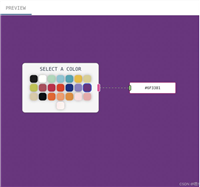使用 vue 与 websocket 创建实时通知系统
在现代应用开发中,实时性已成为用户体验的一个重要组成部分。尤其是在需要实时交互的场景下,如聊天应用、在线协作或通知系统,使用 websocket 可以大大提升用户体验。vue 作为一款流行的前端框架,配合 websocket,可以轻松构建实时通知系统。在本文中,我们将通过一个简单的示例,使用 vue 3 的 composition api(setup 语法糖)来创建一个实时通知系统。
1. 项目准备
首先,确保你的开发环境中已安装了 vue cli。可以通过以下命令进行安装:
npm install -g @vue/cli
创建一个新的 vue 项目:
vue create realtime-notification-system
进入项目目录:
cd realtime-notification-system
接下来,安装 socket.io-client 库,用于与 websocket 进行交互:
npm install socket.io-client
2. 创建 websocket 服务器
在我们的示例中,我们将使用 node.js 和 socket.io 库来创建 websocket 服务器。首先确保你安装了 node.js,然后创建一个新的文件夹,作为服务器的工作区:
mkdir websocket-server cd websocket-server npm init -y npm install express socket.io
然后创建一个名为 server.js 的文件,代码如下:
const express = require('express');
const http = require('http');
const socketio = require('socket.io');
const app = express();
const server = http.createserver(app);
const io = socketio(server);
app.get('/', (req, res) => {
res.send('websocket server is running');
});
io.on('connection', (socket) => {
console.log('a user connected');
// 发送实时通知
setinterval(() => {
const notification = {
message: 'new notification at ' + new date().tolocaletimestring(),
id: math.random().tostring(36).substr(2, 9)
};
socket.emit('notification', notification);
}, 5000); // 每5秒发送一次通知
socket.on('disconnect', () => {
console.log('a user disconnected');
});
});
const port = process.env.port || 3000;
server.listen(port, () => {
console.log(`server is running on http://localhost:${port}`);
});
在命令行中启动 websocket 服务器:
node server.js
服务器启动后,你应该能在 http://localhost:3000 看到 websocket 服务器已运行的消息。
3. 创建 vue 应用
在 vue 项目中,我们需要连接到 websocket 服务器并接收通知。在 src 目录下,编辑 app.vue 文件如下:
<template>
<div id="app">
<h1>实时通知系统</h1>
<div v-if="notifications.length === 0">没有新通知</div>
<ul>
<li v-for="notification in notifications" :key="notification.id">
{{ notification.message }}
</li>
</ul>
</div>
</template>
<script>
import { ref, onmounted, onbeforeunmount } from 'vue';
import { io } from 'socket.io-client';
export default {
setup() {
const notifications = ref([]);
const socket = io('http://localhost:3000'); // 连接到 websocket 服务器
onmounted(() => {
// 监听 'notification' 事件
socket.on('notification', (notification) => {
notifications.value.push(notification);
});
});
onbeforeunmount(() => {
socket.disconnect(); // 组件销毁时断开连接
});
return {
notifications,
};
},
};
</script>
<style>
#app {
text-align: center;
padding: 20px;
}
ul {
list-style-type: none;
padding: 0;
}
li {
padding: 10px;
background: #f0f0f0;
margin-bottom: 10px;
border-radius: 5px;
}
</style>
在以上代码中,我们通过 ref 来创建一个响应式的 notifications 数组,用于存放实时收到的通知。当组件挂载时,我们通过 socket.io 客户端连接到 websocket 服务器,并监听 notification 事件。一旦收到通知,就将其添加到 notifications 数组中。当组件被销毁时,我们会断开与 websocket 服务器的连接,以避免内存泄漏。
4. 运行 vue 应用
接下来,我们在 vue 项目目录中启动 vue 应用:
npm run serve
你可以在浏览器中访问 http://localhost:8080,查看实时通知系统的效果。每 5 秒钟,你将看到新的通知自动出现在页面上。
5. 总结
通过使用 vue 3 和 websocket 创建一个实时通知系统,我们能够为用户提供即时的信息更新。你可以根据业务需求,进一步扩展这一系统,例如实施通知的分类、优先级管理、用户上线的状态管理等。实时系统不仅能提升用户体验,还能有效增强用户的参与度。
在本文中,我们介绍了如何利用 vue 的 composition api 和 socket.io 来快速实现一个实时通知系统。希望这个示例能够为你构建更加复杂的实时交互功能提供灵感。未来,你可能还会遇到如数据持久化、用户身份验证等更复杂的需求,建议配合使用 vuex 进行全局状态管理,进一步加强系统的拓展性和可维护性。
以上就是使用vue与websocket创建实时通知系统的详细内容,更多关于vue websocket实时通知系统的资料请关注代码网其它相关文章!







发表评论